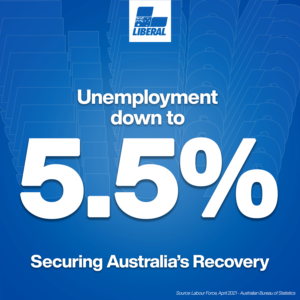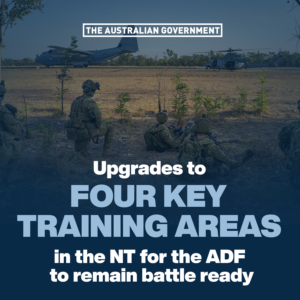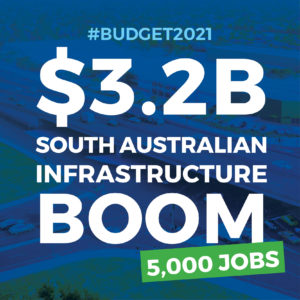For more information on 2021/22 Federal Budget measures, click the topics below.
Economic Recovery
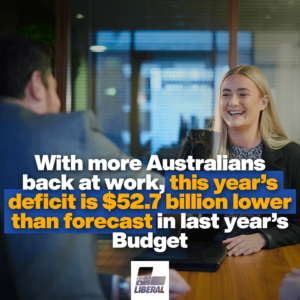
Last year, unemployment projections soared as high as 15 percent, and Treasury feared the economy could contract more than 20 percent – which would have left 2 million Australians unemployed.
However, thanks to early, decisive and proportionate action, Australia’s economy contracted just 2.5 percent. Comparatively, the economies of the United Kingdom, France and Italy all contracted by more than 8%, while Japan and Canada contracted by around 5%.
The International Monetary Fund’s upgrade of Australia’s economic outlook confirms Australia has outperformed all major advanced economies over the past year, predicting the economy to grow by 4.5% this year.
More Australians are employed now – 13.1 million – than before the pandemic began, and our unemployment rate is now at 5.5 percent.
The Australian Government’s JobKeeper Scheme kept 3.8 million Australians in their job, the Cashflow Boost supported over 800,000 businesses and non-for-profits, and millions of pensioners, carers, veterans, and others received payments at a time they needed it most. With more Australians back at work, this year’s deficit is $52.7 billion lower than was expected in last year’s Budget.
Our Government’s targeted, proportionate, and effective approach to combatting the impact of COVID-19 was possible because we entered this crisis in a position of economic strength, as a result of our hard work since 2013 to restore balance to Australia’s budget.
The 2021/22 Federal Budget marks another important step in the Government’s economic plan to secure Australia’s recovery – to strengthen our economy, create more and better local jobs, improve our national resilience, and guarantee the essential services Australians rely on.
For more information on Australia’s economic recovery, click here.
Back to top.
Health
The Morrison Government is guaranteeing the essential health services that Australians rely on with record funding for hospitals, Medicare, mental health, and aged care.
South Australia’s hospitals and health system is receiving $1.6 billion in 2021/22.
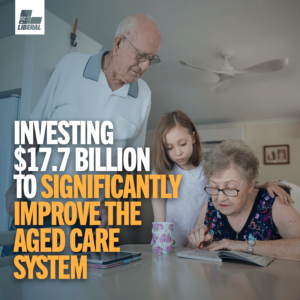
A record $2.3 billion investment is being delivered for mental health services, delivering the National Mental Health and Suicide Prevention Plan – including $820.1 million for a national network of Adult, Youth and Children’s Treatment centres. Included in this funding is $12 million over three years to establish a state-of-the-art adult mental health centre in Adelaide.
A further $1.9 billion is being invested in Australia’s COVID-19 vaccine rollout, and an additional $1.1 billion to extend COVID-19 response measures – bringing the Morrison Government’s total commitment for the COVID-19 emergency health response to over $25 billion since the pandemic began.

Rural Health Workforce initiatives receive $123 million – including $65.8 million to increase bulk billing incentive payments for doctors working in remote areas and rural towns.
Measures to support preventative health receive over $250 million over four years – including $130.9 million for improving cancer screening and support for life-threatening cancers.
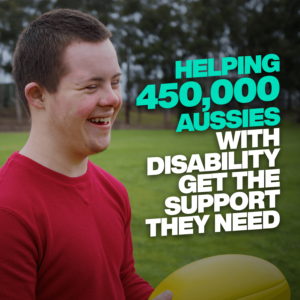
Around $6.7 billion over four years will be invested in medical research – which includes a further $228.1 million in new grants and program openings to back our world leading scientists to find cures and treatments.
For more information on health measures, click here.
Back to top.
Defence
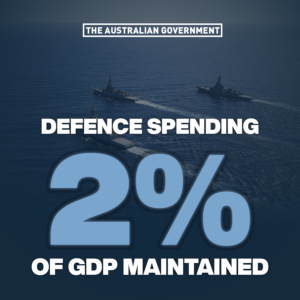
The creation of the $1 billion Sovereign Guided Weapons Enterprise is being fast-tracked.
Over $244 million is to be invested over two years to support the refocusing and pivoting of the ADF presence from the Middle East towards the Asia Pacific region.
Over $59 million invested in Operation RESOLUTE to support the whole-of-government effort in protecting Australia’s borders and offshore maritime interests through surveillance and response.
Infrastructure facilities at HMAS Cairns receive a $155 million investment for new upgrades to support the introduction into service and sustainment of the new Arafura Class Offshore Patrol Vessels – 2 of which are currently under construction in Adelaide.
Four key training areas and ranges – Robertson Barracks, Kangaroo Flats, Mount Bundey and Bradshaw – in the Northern Territory will receive $747 million for necessary upgrades, enabling the ADF to conduct simulated training exercises and remain battle ready.
For more information on defence measures, click here.
Back to top.
National Security
The Morrison Government is continuing to ensure the safety of Australians, our border, and our economy, with more than $1.9 billion over the next decade to further bolster our national security, law enforcement and intelligence agencies – to counter rising foreign interference, espionage, and organised crime.
National security benefits from a $1.3 billion investment in ASIO over the next 10 years, which ensures improved capability to respond quickly and effectively to evolving national security challenges.
Australia’s border security receives increased funding, with $464.7 million to increase the capacity of our Immigration Detention Network and its ability to remove unlawful non-citizens from Australia, $38.1 million to ensure the continued success of Operation Sovereign Borders and stop maritime people smugglers, and $7.7 million for the Australian Border Force Air Liaison Program.
The AFP receives nearly $60 million to combat crimes of child sexual abuse and exploitation, with a particular focus on new frontline operation activities to keep children safe.
Around $51.8 million is being provided to the Australian Criminal Intelligence Commission to tackle serious and organised crime, and also support delivery of the National Criminal Intelligence System.
For more information on national security measures, click here.
Back to top.
Road/Transport Infrastructure
More than 5,000 direct and indirect South Australian jobs are expected to be supported through the Federal Liberal Government’s $3.2 billion investment in SA infrastructure.
An additional $1 billion is being invested in the $2 billion Road Safety Program – bringing it to a total of $3 billion – delivering thousands of kilometres of road upgrades throughout Australia while supporting around 4,500 jobs.
The Truro Bypass, creating better access to SA and NSW freight networks, receives $161.6 million and is expected to support 555 direct and indirect jobs during construction.
The Gawler Rail Line Electrification Project (left) receives an additional $60 million, with construction and electrification on track to be completed by the end of 2021.
As the final stages of North-South corridor near completion, a further $2.6 billion has been allocated to fund the construction of the Darlington to Anzac Highway stretch.
The 472-kilometre Strzelecki Track (right) is receiving an additional $64 million to completely seal the full length of the track – with Stage 1 of the project now complete and the first 50 kilometres open to traffic.
Other key investments include $148 million for the Augusta Highway Duplication Stage 2, an additional $27.6 million for the Overpass at Port Wakefield and Township Duplication, $48 million for the Heysen Tunnel Refit and Upgrade Stage 2, and $22.5 million for the Marion Road and Sir Donald Bradman Drive Intersection Upgrade.
For more information on roads and transport infrastructure measures, click here.
Back to top.
Small Business
More than $475 million is being invested in Australia’s economic recovery to drive industry growth and scientific development – complementing our Government’s existing $1.5 billion Modern Manufacturing Strategy.
The Morrison Government is also investing approximately $1.2 billion in Australia’s Digital Economy Strategy – to help Australian businesses modernise and create jobs for the future.
Small businesses are expected to benefit from a $12.7 million investment to support an additional 10,000 small businesses to harness digital technologies and improve their digital capability as part of the Digital Solutions – Australian Small Business Advisory Services program.
We’re extending and expanding the Instant Asset Write-off so over 99 per cent of Australian businesses, employing over 11 million workers, can write-off the full value of any eligible asset they purchase.
A $16 million investment over four years is to support the ongoing delivery of the Payment Times Reporting Scheme, ensuring those working with larger companies on government contracts get paid on time.
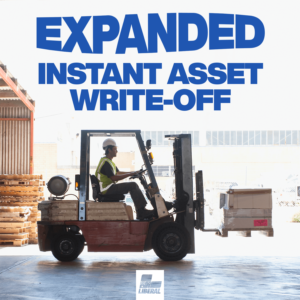
Through a $2.6 million investment over four years, measures will be taken to support, encourage and strengthen Australian business participation in Commonwealth procurement.
For more information on small business measures, click here.
Back to top.
Job Creation
Through an additional $500 million investment, the successful $1.0 billion JobTrainer fund will be extended and expanded – delivering around 163,000 additional free or low-fee training places in areas of skills need.
Over 146,000 South Australians benefiting from JobSeeker and other income support payments will receive an increase of $50 per fortnight in order to provide further financial assistance until they find employment.

From 2020/21, $23.4 million is being provided over three years to improve existing employment services which provide support for job seekers.
Under a $213.5 million investment, the Local Jobs Program is being expanded to all 51 Employment Regions around Australia and extended until June 2025.
A $6.2 million investment ensures the extension of the Jobs Fairs program and delivers up to 26 Job Fairs across Australia between June 2021 and June 2022.
South Australians Job Fairs are a great opportunity to connect job-seekers with employers throughout various regions – with 2 held in Adelaide and the Murraylands in 2020.
For more information on measures designed to create jobs, click here.
Back to top.
Tax Relief
Through extending the Low-and-Middle-Income Tax Offset for an additional year, the 2021/22 Budget will provide a tax cut for more than 720,000 South Australians – who will benefit by up to $1,080 for individuals or $2,160 for couples.
An additional $2 billion is committed to the research and development (R&D) tax incentive – providing a tax offset for eligible R&D activities to encourage the undertaking of important projects and provide businesses with more predictable, less complex support.
Measures are being introduced to modernise individual tax residency rules – simplifying the tax system for globally mobile individuals and their employers.
Unnecessary regulatory red tape for Employee Share Schemes (ESS) will be removed – improving the way they are taxed and making it easier for businesses to offer ESS to provide Australians with a share in the economic value they create.
For more information on tax relief measures, click here.
Back to top.
Education
South Australian students are to benefit from the Morrison Government’s record $1.8 billion funding for schools in South Australia in 2021/22, up from $1.6 billion in 2020/21. Funding for SA schools has grown 64 per cent since the Government came to office in 2013.

More than $19 billion in funding for our Australian universities in 2021/22, with 30,000 additional places having been made available at universities through our Government’s Job-Ready Graduates’ Package.
For more information on education measures and investment, click here.
Back to top.
Veteran Affairs
With a focus on wellbeing, suicide prevention and more funding for critical departmental services, the 2021/22 Budget adds an additional $702.6 million, building on the Government’s annual commitment of over $11.5 billion to supporting veterans and their families.
Investment to support Australia’s 325,000 veterans and their families includes $98.5 million over two years to reduce claim times and make it easier and faster to access support; $138.3 million over four years for targeted financial, physical and mental support services; and $62.1 million to improve long-term data capability and examine all aspects of Defence members’ service – from enlistment transition.
Regarding the recently-announced Royal Commission into Defence and Veteran Suicide, this Budget provides $28.9 million for the Department of Veterans’ Affairs to support requests from the Royal Commission and National Commissioner.
For more information on veteran affairs measures, click here.
Back to top.
Families and Women
The 2021/22 Budget commits $3.4 billion in new measures to improve outcomes for the safety, economic security, health and wellbeing of Australian women.
Informed by the values of respect, dignity, choice, equality of opportunity and justice, this package includes $1.1 billion in funding for women’s safety, including prevention and response to violence against women and children, $1.9 billion to support women’s economic security including $1.7 billion to improve the affordability of child care, and $351.6 million in women’s health and wellbeing measures.
Support for frontline services, as well as support for improving our family and justice responses to family crises and sexual harassment, are a priority of this year’s Budget, in line with our National Plan to Reduce Violence Against Women and their Children 2010-22.
Removing the childcare subsidy cap and, starting at July 2022, increasing childcare subsidies for around 25,000 families, this Budget is helping give families greater choice and flexibility to manage work and care.
More information on measures for women and families, click here.
Back to top.
Trade and Foreign Affairs
Trade, tourism and investment remain crucial for Australia’s economic growth, job growth, and for advancing Australia’s interests internationally.
The 2021/22 Budget provides greater funding certainty for Australian exporters, and enhances competitiveness through funding of $37.4 million over three years to drive the implementation of the Simplified Trade System.
Included in the Budget is an additional $65.5 million for the Export Market Development Grants (EMDG) program to support small and medium sized businesses to receive up to 50 percent of their total marketing expenses.
Australian exporters and businesses, supported by a four-year investment of $198.2 million, will be on the frontline delivering Australia’s Indo-Pacific priorities, while expanding our advocacy and international cooperation as Australia simultaneously commits to providing $4 billion in Official Development Assistance towards health security, stability and economic recovery in the Indo-Pacific in 2021/22.
Negotiations on new Free Trade Agreements continue, including with the UK, EU, and India, among others. Existing agreements helped deliver a record trade surplus of $73 billion in 2020, up from $68 billion in 2019.
For more information on trade and foreign affairs measures, click here.
Back to top.













